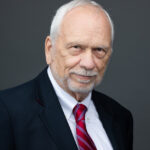 The assumptions by which you live your life, that underpin your expectations, that serve as unwritten security, and guide your personal life and career have been torn asunder by COVID-19 and societal upheaval.
The assumptions by which you live your life, that underpin your expectations, that serve as unwritten security, and guide your personal life and career have been torn asunder by COVID-19 and societal upheaval.
something accepted as true – merriam-webster.com
People may sense, but perhaps have not yet consciously acknowledged, that these assumptions, have been shredded. Or better yet, turned upside down.
Let’s look at some contemporary examples. Want to dine out? Find a restaurant that is open. Own a restaurant? There was a good chance you had to close it, permanently. Enjoy the urban lifestyle? Large urban areas, the big cities, are reportedly dying. Some are too squalid, too dangerous, taxes too high. Has population density changed your ideas about where to reside and work? Up in years and not avoiding crowds now – really? And, with telework, if you can do it, is there anything remaining that attracts you to Gotham?
How about retail? Before COVID-19, retail was in decline affected to some degree by the Internet’s on-line market place. Were you a retail store owner or investor, how about an employee of a retail establishment? Stores are closed; jobs are gone and may never return. Own equity in a commercial real estate investment trust, good luck!
Enjoy the office setting in your career where you interact personally with peers, managers, and leaders – angling for the next promotion or building your resume for the next opportunity? How does this look like through the telework lenses now?
If summer were spring and the other way round,
Then all the world would be upside down.
– allegedly played by the British at their surrender at the Battle of Yorktown in 1781
Virtually every assumption that you had, explicit and implicit, is now gone, if not entirely gone, then severely changed.
William Bridges’ book, “Managing Transitions: Making the Most of Change” published in 1991 distinguished between change, something external that happens to you quickly, and transition as something that you process mentally over a longer time frame. At the time of publication, Bridges was concerned with helping organizations successfully introduce change along with the transition, guiding a psychological letting go of the old situation. In an organizational environment, the end state was identified and the change and transition experts managed the journey from the old to the new.
Who was ready for the seismic COVID-19 change event? People were confronted with rapid change, affecting their assumptions whether they liked it or not. There was no time for a planned period of transition to get ready for the ‘New Normal.’
Now that the virus and all of its collateral effects have been with us for several months, with our assumptions shattered, what are we transitioning to, or are we? Millions of people departed the status quo. This creates a challenge for people forced to adapt to the virus-driven change, and simultaneously transition their assumptions into the new reality, the “New Normal.” Of course, without benefit of a known destination and assistance from corporate professional change managers.
Let’s digress for a moment. Organizations’, whether for-profit, non-profit, or public sector, concerns lie in sustaining the organization, identifying and weathering “storms” that threaten their survival while continuing to fulfill their missions. Methods for managing risks to the enterprise, program, or project are available. Contingency plans are in existence to manage a disaster such as a hurricane threat to a skilled nursing facility, or the aftermath of a commercial aircraft accident. Insurance might be used to address certain kinds of risk. Many risks, initially identified as hazards or threats, were known for months and maybe years. Business entities will generally have human, technical, and financial resources to deal with these situations.
But what about the individual at the personal level? Is the timeline different from an enterprise, program or project? In many cases, the answer is yes, the threat, hazard or risk may present itself without warning, leaving little time to react – perhaps 1-2 seconds in the absolute worst case. On the COVID-10 timescale, the timeline was a few weeks, or at most one or two months.
So, now the old assumptions are largely gone, as is our comfort associated with them. What are we assuming to be true for the “New Normal”? Then, what are the hazards, threats, and risks associated with these new assumptions? It is the time of uncertainty, and that creates fear.
You are your own transition manager now! What do you fear about the future? Have you made a list of your new assumptions? How confident are you that they can be accepted as true? Do you know your destination? What risks do you foresee on the journey? What is your plan to get to your ‘New Normal’ destination?
Bio:
His career has been enriched through education, training and experience beginning in the early 1970’s as an investigator, and later as economist, statistician, operations researcher, adjunct professor, business owner, newsletter publisher, consultant, quality award examiner, risk and QA manager, and contractor.
The common thread throughout this time has been gathering, reducing, assessing, summarizing, and presenting findings to enable decision making. With the arrival of COVID-19, it was recognized that methods and tools used for decision making in a business setting, particularly involving risk, can be adopted to individuals.
- Toney is also an aspiring business fiction writer where his future works will be published on vucanites.com.